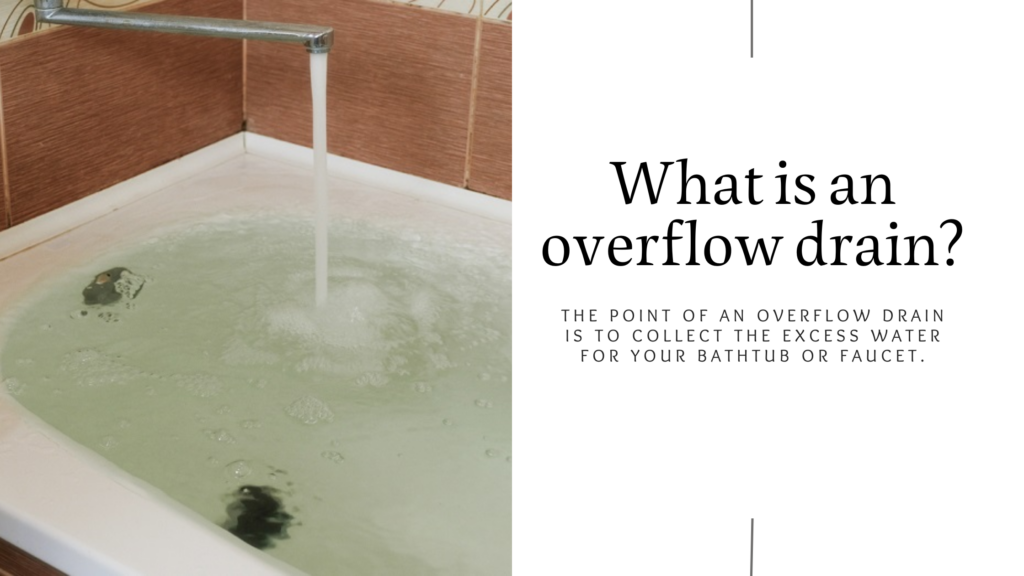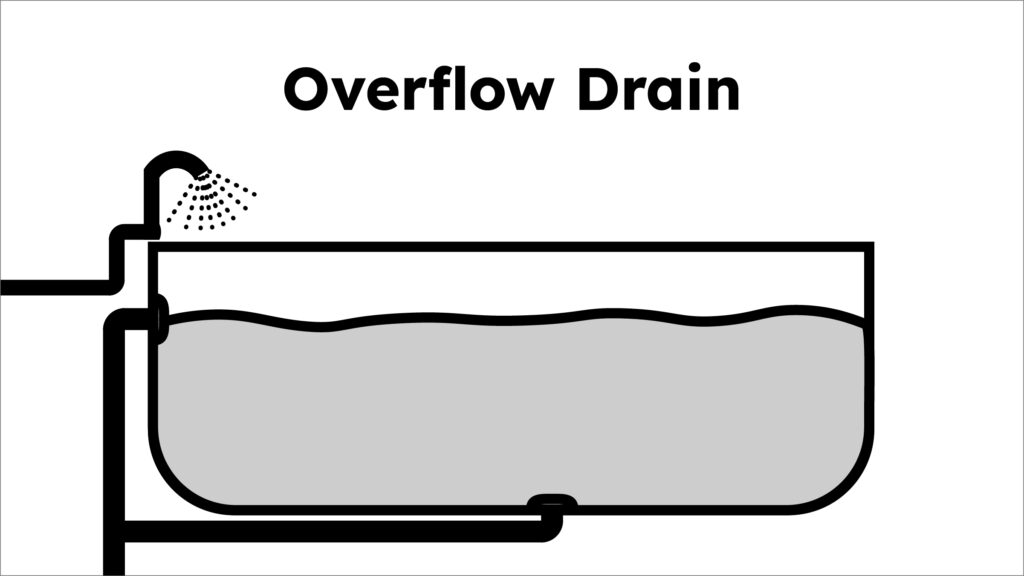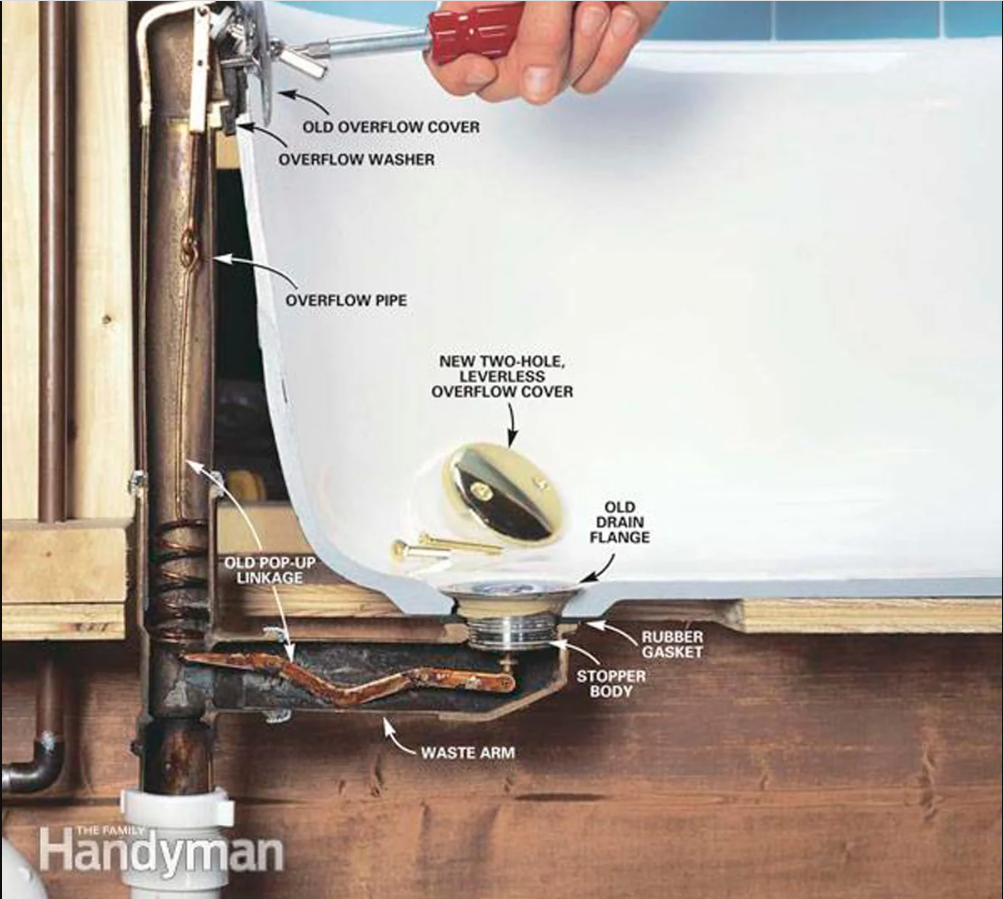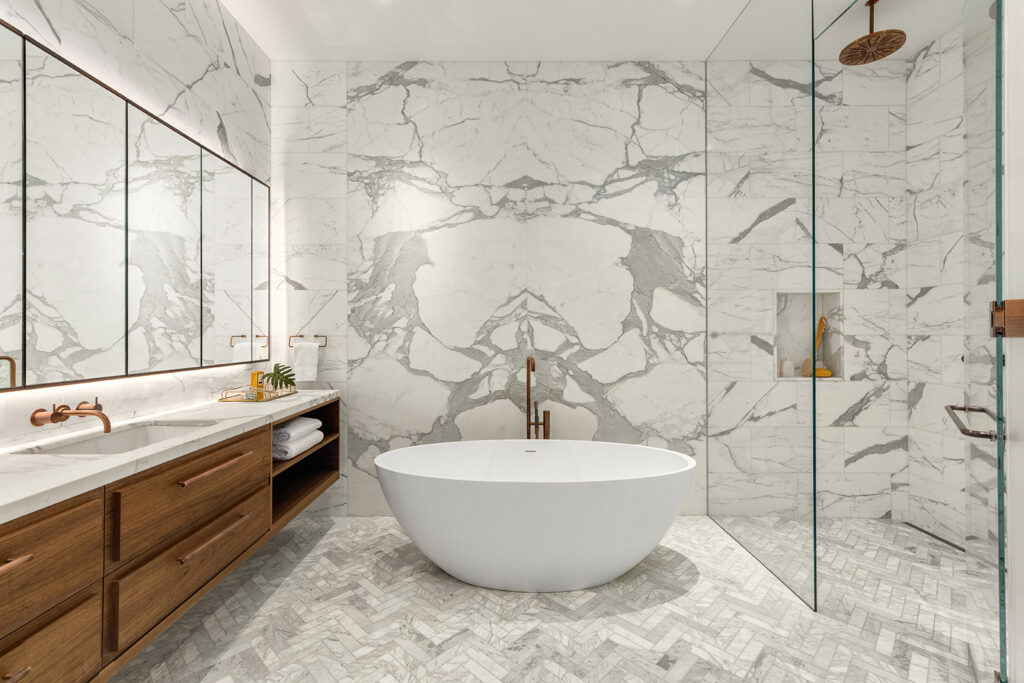
One-Piece vs Two Piece Toilet – Pros and Cons- 2025 Expert Guide
When upgrading your bathroom, one of the most important—and often overlooked—decisions is choosing between a one-piece or two-piece toilet. While

Bathtub overflow drains provide a great asset to any bathroom, helping to prevent flooding when filling the bathtub. Although it can be a bit more complicated than installing a regular drain, we will look at all the benefits an overflow drain can bring and most importantly, how it works.

The point of an overflow drain is to collect the excess water for your bathtub or faucet. The drain collects the water, preventing it from overflowing if you accidentally leave it on. An overflow drain can also help to keep a minimal level of water in a bathtub-as long as the overflow drain is kept in the right position, it will drain water, but keep the existing level, ensuring that you have a consistent level of water when you turn the water on before your bath.
As stated previously, an overflow drain helps to ensure that your bathtub does not overflow if you leave the faucet on. This is important if you don’t want to wait by your bathtub while it slowly fills with water for your bath. Beyond just creature comfort, it also ensures that water won’t spill out and flood your bathroom if the faucet is left running.
With overflow drains, there are two primary types available: Traditional and Integral. Which one you have in your home will largely depend on the age of your house or bathtub.
A traditional overflow consists of a hole cut into the tub to accommodate a drain that installs on the inside and outside walls which collect excess water and sends it down a tub drain to a P-trap. This style is perhaps the most common in older homes and requires some flexibility in cutting and installing the pipe system.
An Integral overflow is designed a little differently than the traditional style. Whereas the traditional overflow is made with an exterior pipe and drain system, an integral overflow is similar to a sink overflow. An opening is cut along the interior of the bathtub and the excess water is then diverted between the walls of the tub drain. This style is popular for those that don’t want to deal with exposed piping as the overflow channel is built in the tub’s inner wall.
Instead of a top-mounted overflow opening, some tubs and basins have side-drain overflow systems, where the overflow opening is positioned along the side of the fixture, allowing water to exit before reaching the rim.
Bathtub overflow drains come in standard sizes, with variations depending on the tub design and plumbing codes.
The drain pipe diameter is typically 1 ½ inches (38 mm), though some systems use 2 inches (50 mm) for higher flow rates.
The overflow opening usually measures 2 to 2 ½ inches (50–63 mm) in width, while the faceplate diameter is around 3 inches (76 mm). The overflow pipe length varies based on tub depth, ranging from 10 to 20 inches (254–508 mm) from the overflow opening to the main drain. Standard tubs have a 10–16 inch (254–406 mm) distance between the overflow and main drain, but deeper soaking tubs may require longer piping. Some modern designs, such as linear or slotted overflow drains, have wider openings (3 to 6 inches) for enhanced drainage. Custom and luxury tubs may feature oversized or integrated overflow systems for deeper water levels.

An overflow drain might seem complicated, but its mechanics are quite simple. It is designed to prevent water from spilling over the edge of a bathtub or sink by redirecting excess water down a secondary drain. Below is a step-by-step breakdown of how an overflow drain works.
When you fill a bathtub or sink, water typically drains through the main drain at the bottom. If this drain is open, water will exit normally without needing to use the overflow drain.
If the main drain is sealed—either by a mechanical stopper, debris, or a clog—water will begin to accumulate inside the tub or sink. As the water level rises, it moves toward the overflow opening.
Once the water reaches the overflow drain, located near the upper inner wall of the bathtub or sink, it begins to flow into this secondary drainage system.
The overflow drain connects to a vertical pipe hidden behind the fixture. This pipe directs excess water downward, preventing it from spilling over the edge of the tub or sink.
The overflow pipe usually merges with the main drain line before reaching the plumbing system’s trap and drainpipe. This ensures that excess water follows the same drainage path as regular wastewater.
The overflow system, like the main drain, includes a P-trap or S-trap. This trap holds a small amount of water to prevent sewer gases from rising back through the pipes and entering your home.
As long as the pipes are clear, the overflow drain prevents water from rising beyond a certain level, protecting your bathroom from flooding and potential water damage. However, if the overflow drain becomes clogged, it will not function properly, making it essential to keep both the main and overflow drains free of debris.
By understanding these steps, you can ensure that your overflow drain is functioning correctly and preventing unnecessary water damage.
An overflow drain consists of an overflow cover which protects the top of the overflow and usually contains the switch that engages and disengages the trap. The washer seals the top of the overflow. This leads to the bottom of the drain, which contains a separate cover that is sealed by a gasket and a bathtub stopper.

Depending on the style of bathtub and its use, an overflow drain is not always necessary. If your bathtub is a shower/bathtub combo or a smaller model, then it isn’t necessary. Installing an overflow drain is also a bit more involved than installing a standard drain. That being said, it is essentially a safety precaution and is recommended for all bathtubs just to prevent overflow and flooding if you ever decide to fill your bathtub and walk away.
There are a few issues that can occur with an overflow drain. Please keep in mind that while an overflow drain is a great addition, it is also installing a secondary pipe system that can corrode or leak.
Clogs can easily occur in any household that sees extensive use. Most commonly, hair and other debris cause clogs, which ultimately disrupt water flow and create obstructions in your piping. Clogs result in lower water pressure over time and may lead to damages in the future if left unattended. This is why it’s important to clean or repair your clogged pipes annually. Additionally, our bathtub capacity guide can help you understand how much water your bathtub holds and manage water flow more effectively.
Leaks can occur over time due to the natural erosion of the pipe material. Leaks will result in lower water pressure and, eventually, water damage to your other pipes and housing material, so it is best to inspect your plumbing regularly.
Foul odors from an overflow drain are often caused by trapped debris decomposing over time, mold or mildew buildup from stagnant water, or sewer gas escaping due to a dried-out trap. If an overflow drain is not used frequently, the water in the trap can evaporate, allowing unpleasant smells to enter the bathroom. Regularly flushing the overflow drain with a vinegar and baking soda solution can help eliminate odors and keep the pipes clean.
In some cases, an overflow drain may fail to function properly during a flooding event. This can happen if a fully clogged pipe prevents water from draining, if the overflow opening is too small or incorrectly positioned to handle large amounts of water, or if the overflow pipe is damaged or disconnected. If the overflow system is not working as expected, it can lead to significant water overflow and potential damage. To ensure it functions correctly, regular inspections and maintenance are essential to keeping the drain clear and operational.
Preventing overflow in your bathtub or sink requires proper maintenance and proactive steps. Below are numbered steps to help you keep your plumbing system functioning efficiently and reduce the risk of clogs or water damage.
Regularly inspect and clean the overflow drain to remove any buildup of soap scum, hair, or debris that may obstruct water flow. Use a pipe brush or a small bottle brush to clean inside the overflow opening.
Be mindful of what goes down your drains. Avoid pouring:
Hair and soap buildup are common causes of drain clogs. To prevent blockages:
Inspect the overflow drain plate and gasket periodically. If the gasket (the rubber seal behind the overflow cover) deteriorates, water can leak into the wall rather than draining properly. Replace it if necessary to prevent hidden water damage.
For added protection, consider installing an overflow alarm. These small battery-powered devices detect rising water levels and emit an alarm when the water reaches the overflow opening, allowing you to turn off the tap before it spills over.
Although the overflow drain is a backup system, it’s best to prevent excessive water levels in the first place:
Ensure your plumbing system is free of blockages to keep both the main and overflow drains functioning properly:
An overflow drain is a great safety net, especially for busy individuals who may get distracted while filling the tub. However, it is not a substitute for proper plumbing maintenance. By taking proactive measures such as keeping drains clear, avoiding harmful materials, and inspecting your plumbing system regularly, you can ensure your overflow drain remains an effective backup system while reducing the risk of clogs, leaks, and flooding.

Eric is the founder and president of Badeloft USA. He has been the president of Badeloft’s US division for over ten years and oversees all marketing and branding aspects of Badeloftusa.com.
His expertise lies in small business development, sales, and home and bathroom industry trends and information.
Contact us with any business related inquiries.

Free material samples and tub templates

When upgrading your bathroom, one of the most important—and often overlooked—decisions is choosing between a one-piece or two-piece toilet. While

Small details, including what you place on the floor, can make a big difference when setting up or upgrading your

Plumbing traps may seem like small components, but they are critical in keeping your home safe and odor-free. Two of
When shopping for new bath linens, the difference between a bath towel and a bath sheet can feel subtle, but
Fill out the form below to request a free material sample
"*" indicates required fields
"*" indicates required fields
"*" indicates required fields